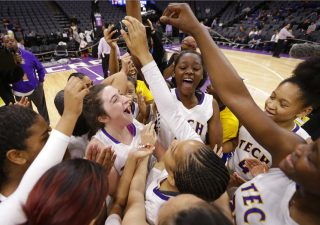Why did more than 1,000 people die after police subdued them with force that isn’t meant to kill? This three-year investigation by the Associated Press, FRONTLINE (PBS) and The Howard Centers for Investigative Journalism at the University of Maryland and Arizona State University has answers.
About The Howard Center
The Howard Center for Investigative Journalism, launched in 2019, gives University of Maryland Philip Merrill College of Journalism students the opportunity to work with news organizations across the country to report stories of national or international importance to the public.…
About The Howard Center for Investigative Journalism
Lorem ipsum dolor sit amet, consectetur adipiscing elit, sed do eiusmod tempor incididunt ut labore et dolore magna aliqua. Sit amet consectetur adipiscing elit ut. Imperdiet nulla malesuada pellentesque elit eget gravida cum. Ultricies leo integer malesuada nunc vel. Varius…
Mega Billions: The great lottery wealth transfer
Using an analysis of cellphone location data, this nationwide investigation of state lotteries found that stores that sell tickets are disproportionately clustered in lower income communities in nearly every state and that their customers come from those neighborhoods. This pattern, coupled with predatory advertising practices and powerful state lobbying efforts, is driving a multibillion-dollar wealth transfer from low-income U.S. communities to powerful multinational companies, the collaboration between the Howard Center and Boston University found.
About “Mega Billions: The great lottery wealth transfer”
In the popular imagination, the lottery is a harmless amusement in which people spend a few dollars on a Powerball ticket when the jackpot gets big. Data journalists and reporters from the Howard Center for Investigative Journalism at the University…
Unlevel Playing Fields
This collaboration between the Howard Center, The Shirley Povich Center for Sports Journalism and PBS NewsHour revealed that high school girls are still at a disadvantage nearly 50 years after Congress passed the sweeping Title IX law that guarantees equity for girls and boys in school-based athletics. In nearly a dozen stories and a national poll, the investigation illustrated girls’ second-class status, explained why the law isn’t working and examined solutions to fix the situation.
Title IX, which passed in 1972, is a federal law that prohibits sex-based discrimination at any school that receives funding from the federal government, including in sports programs. While Title IX has led to a significant increase in girls playing scholastic sports, it has fallen short of achieving equity for high school girls in areas such as facilities, equipment, scheduling and publicity, the four-month, student-led investigation found.








You must be logged in to post a comment.